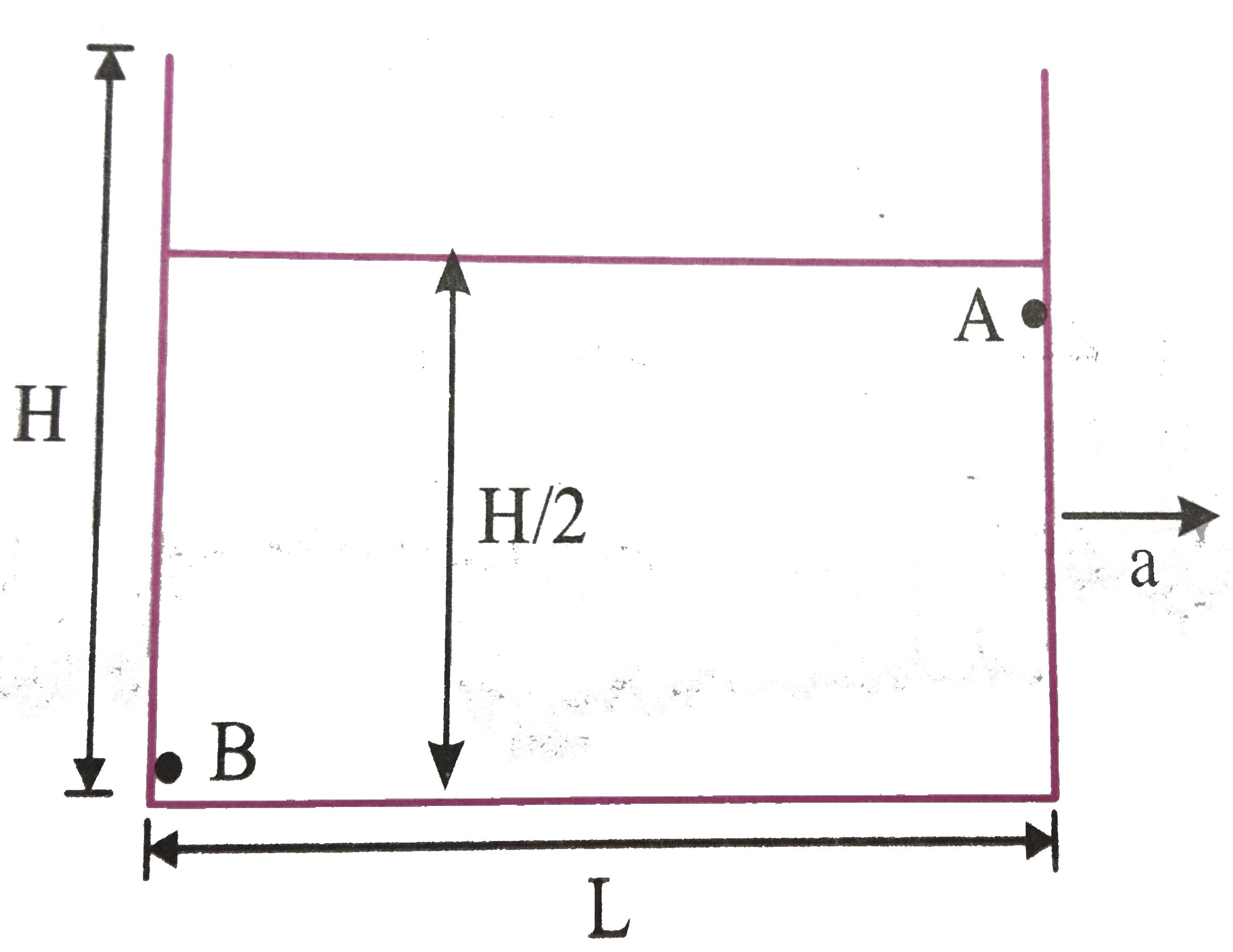
A vessel of height H and length L contains a liquid of density ρ upto height H/2 The vessel start accelerating horizontally with acceleration a towards right. If A is the point at the surface of the liquid at right . If A is the point at the surface of the liquid at right end while the vessel is accelerating and B is the point at bottom of the vessel on the other end, the difference of pressures at B and A will be
ρ2(gH+aL)
ρ2(gH−aL)
2ρ(gH−aL)
3ρ2(gH+aL)
The correct Answer is:A
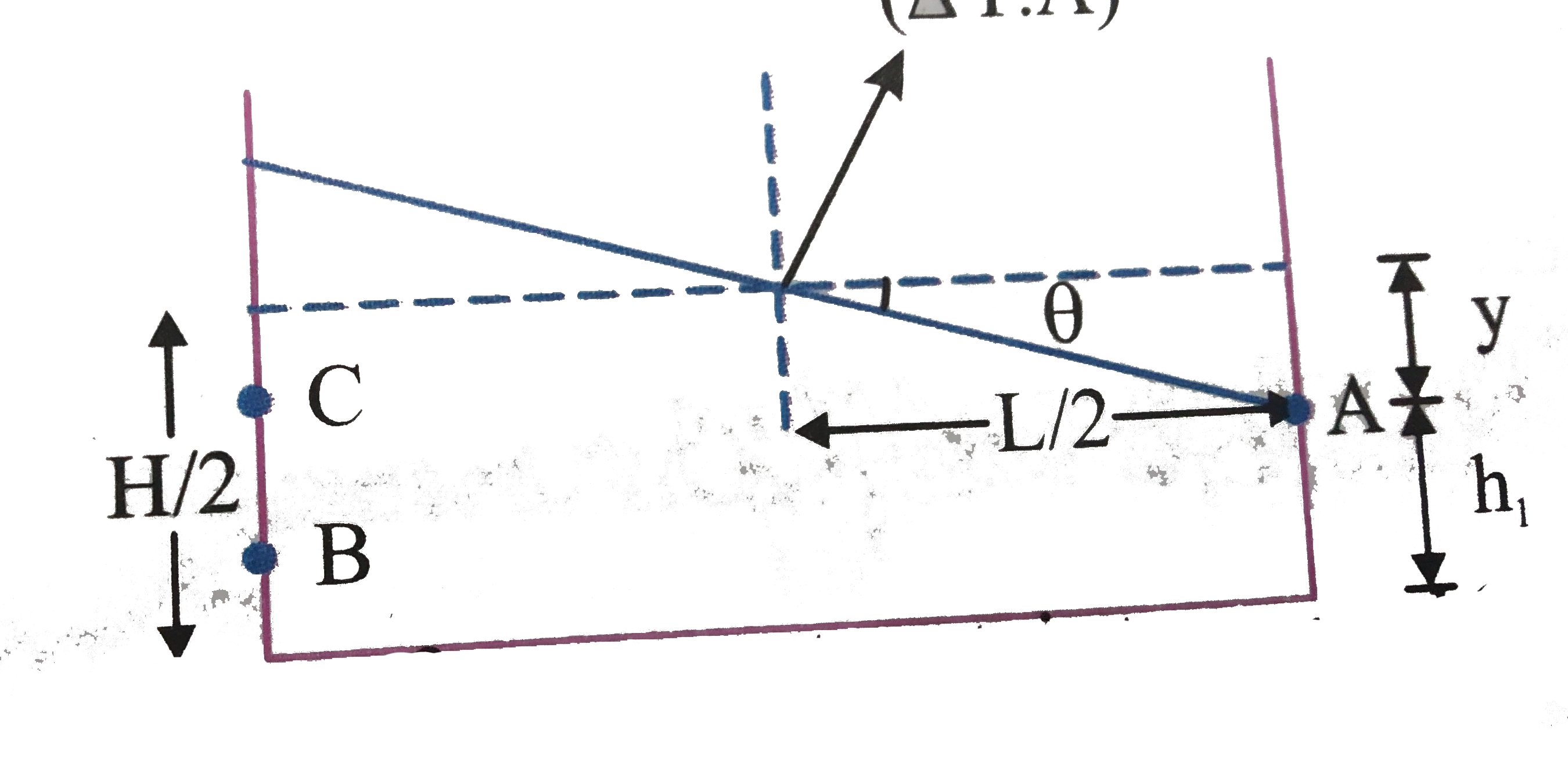

Let force (ΔP) A acts on the surface of the liquid while vessel is accelerating.
(ΔP.A)cosθ=mg,(ΔP.A)sinθ=ma
tanθ=ag and y=L2tanθ=aL2g
h1=H2−aL2g
Considering a fluid element at distance x from left side of the vessel then
(p+dp)A′−pA′=(A′dxρ)a
∫CAdp=∫CAρadx,pC−pA=aρL
If points A and C are at same level
pB−pC=ρgh1=ρg[H2−aL2g]
pB−(ρghL+pA)=ρg[H2−aL2g]
pB−pA=ρ2(gH+aL)
Topper's Solved these Questions
- BOOK - NARAYNACHAPTER - MECHANICAL PROPERTIES OF FLUIDSEXERCISE - integer Type Questions25videos
MECHANICAL PROPERTIES OF FLUIDS
- BOOK - NARAYNACHAPTER - MECHANICAL PROPERTIES OF FLUIDSEXERCISE - Level 1 (H.W)55videos
MECHANICAL PROPERTIES OF FLUIDS
- BOOK - NARAYNACHAPTER - MECHANICAL PROPERTIES OF FLUIDSEXERCISE - Paragraph Type Questions5videos
MECHANICAL PROPERTIES OF FLUIDS
- BOOK - NARAYNACHAPTER - MATHEMATICAL REVIEW & PHYSICAL WORLDEXERCISE - C.U.Q13videos
MATHEMATICAL REVIEW & PHYSICAL WORLD
- BOOK - NARAYNACHAPTER - MECHANICAL PROPERTIES OF SOLIDSEXERCISE - LEVEL-II (H.W)24videos
MECHANICAL PROPERTIES OF SOLIDS
Similar Questions
A vessel filled with water is moving horizontally with constant acceleration w. What shape will the surface of the liquid have?
View SolutionFigure shows as a L-shaped tube in which a liquid of density ρ is filled. Find with what acceleration the tube is accelerated towards right so that no liquid will fall out of the tube.
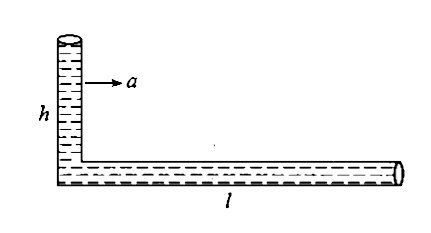 View Solution
View Solution
Knowledge Check
- Question 1 - Select One
If a vessel containing a fluid of density ρ upto height h is accelerated vertically downwards with accelerations a0. Then the pressure by fluid at the bottom of a vessel is
Ap=p0+ρgh+ρha0Bp=p0+ρghCp=p0+ρh(g−a0)Dp=p0ρgh - Question 2 - Select One
A vessel containing water is given a constant acceleration 'a' towards the right along a straight horizontal path. Which of the following diagrams in Fig. represents the surface of the liquid?
A(a) B(b)
B(b)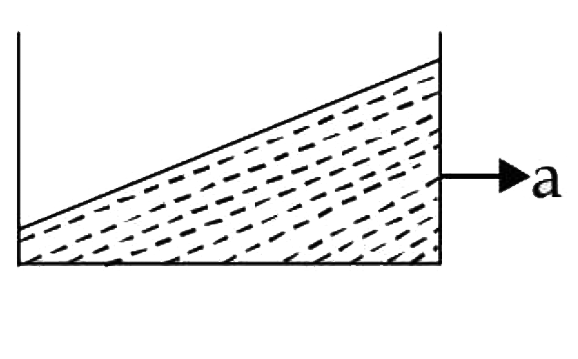 C(c)
C(c)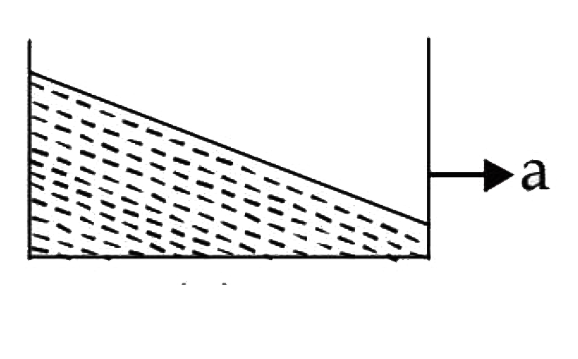 DNone of these
DNone of these - Question 3 - Select One
A block of volume V and density ρ is floating in a liquid of density 2ρ filled in a vessel. Now the vesset starts falling freely with acceleration g. Then the volume of block inside the liquid in the falling condition is
AVBV/2CarbitrayDzero
A large vessel of height H is filled with a liquid of density ρ upto the brim. A small hole of radius r is made at the side vertical face, close to the base. The horizontal force is required to stop the gushing of liquid is
View SolutionA tank with base area L2 is filled with a liquid to height H. The tank is acceleration horizontally with acceleration a as shown in figure. If a small hole is made at the point A. then it is observed that the liquid does not come out of the tank. The magnitude of acceleration should be
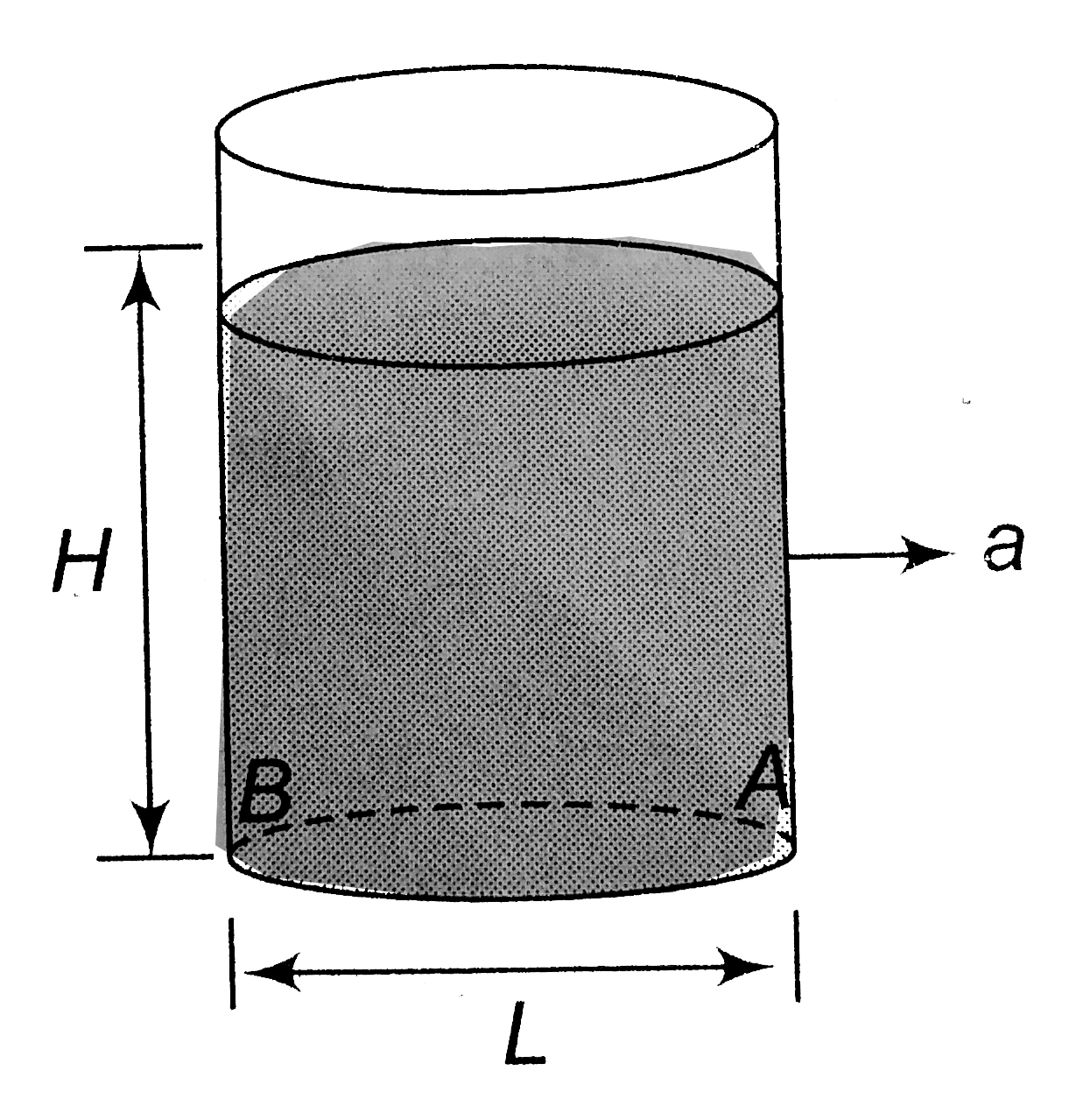 View Solution
View SolutionA beaker containing a liquid of density ρ moves up with an acceleration a. The pressure due to the liquid at a depth h below the free surface of the liquid is.
View Solution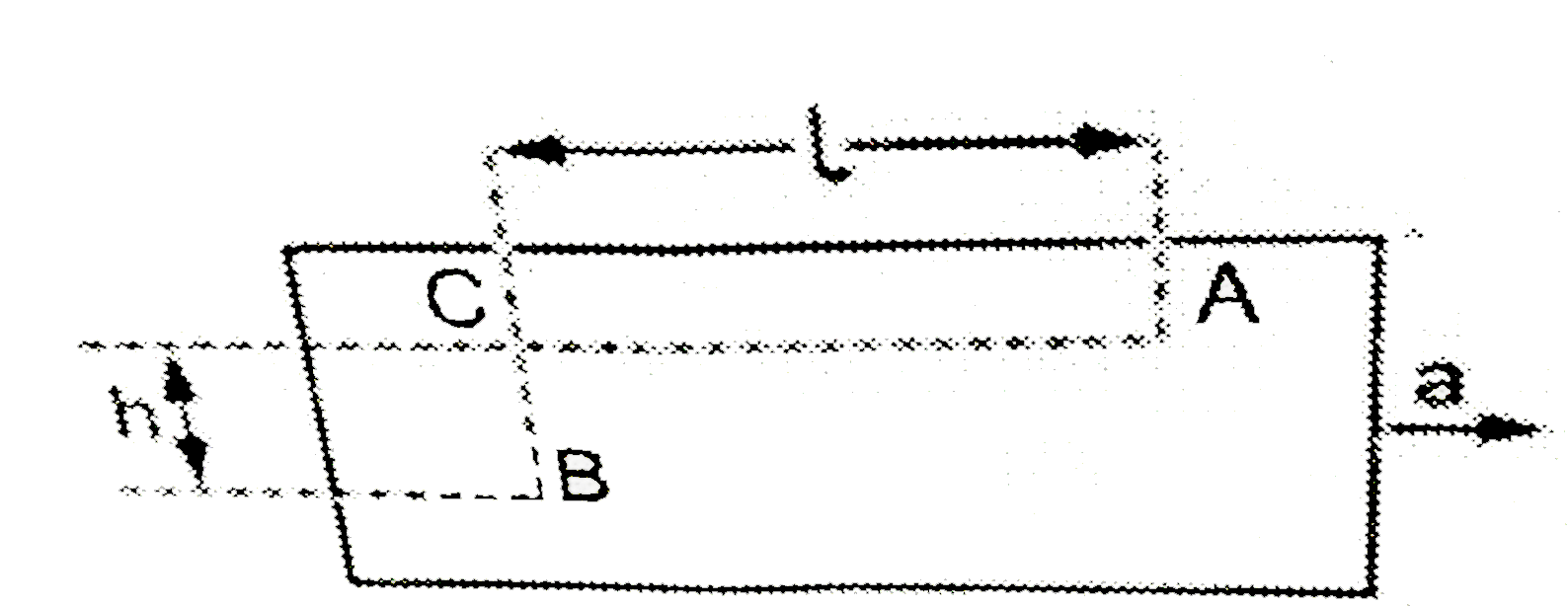
A sealed tank containing a liquid of density ρ moves with a horizontal acceleration a, as shown in the figure. The difference in pressure between the points A and B isView SolutionA body floats in a liquid contained in a vessel. The vessel falls vertically with an acceleration ( a (< g). If Vi and Vf be the initial and final volume of the body immersed in the liquid then :
View Solution

